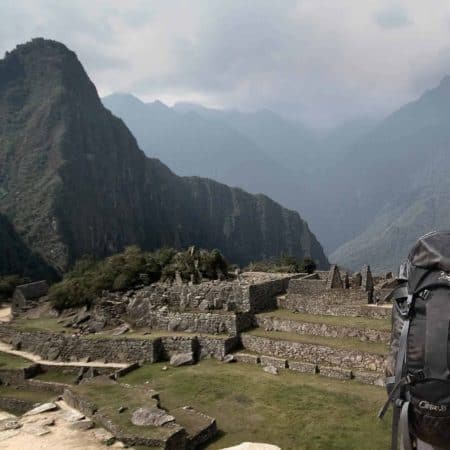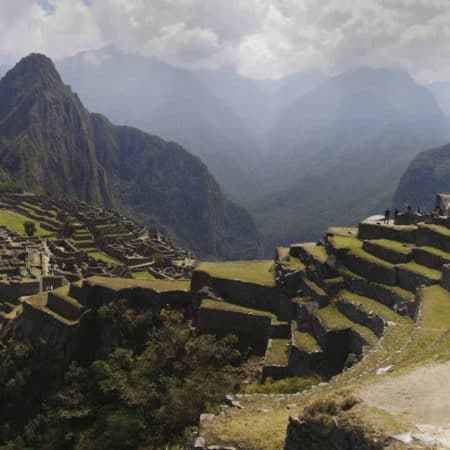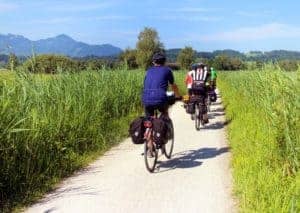Multi-day hikes are a fantastic way to see more of the countryside and get further into nature. Whether it’s your first time or you’ve done several a bit of forward planning will go a long way to ensuring that you get the most out of your hike.
Here are our top tips for planning a multi-day hike.
1. Guided vs Self-guided Hiking
The first decision is whether to take a guided trip, where everything is organised for you, or organising it yourself. Guided hikes can be great if you don’t want to spend your time organising or reading the map or you’d like to meet more people. Guided trips range from hiking weekends, where one of the participants leads the hike, to a full trek with professional local guides. If there’s a few of you, you can arrange a more tailored guided experience, although this does come at a higher cost.
2. Accommodation and luggage
Once you’ve decided on the style, you need to determine what you’re doing with your luggage. The main options are: carrying everything including camping equipment; carrying your luggage for the week but using pre-established camps / bed and breakfast accommodation; or carrying a day pack and using porters or luggage transport services.
Make sure you’re clear on the style of hike you’re doing as this will make a big difference to what you bring, how you train and how you feel on the trip.
3. Ensure you’re fit enough
Part of the fun of multi-day hikes is that they are a challenge but you won’t enjoy it if you’re struggling. Some training up front will reap huge rewards while you’re away. Try to get out for longer hikes as well as your regular workout, and practice on hills can make all the difference if your trek is going to be mountainous.
4. Break in your walking boots

It might sound obvious, but ensure you have good walking boots and they are well broken in across all terrains. If you’ve only broken them in on flat terrain but your hike is hilly you will get blisters or worse.
5. Pack light – but for all weathers
Packing light, but taking into account weather fluctuations, is probably the hardest challenge. Bring layers of quick dry clothing, don’t expect to have clean clothes every day and make sure that you’ve got enough to keep you warm and dry in the evenings. Once you’ve decided on what to pack take a look at everything you plan to bring and then take as much out as possible. But don’t forget the blister plasters!
6. Invest in a good backpack
A good backpack is comfortable, fits well and doesn’t rub while you’re walking. Get a the smallest rucksack possible for your hike. Invest in a pack with good padding on the shoulders and waist strap and with plenty of pockets.
7. Bring walking poles
Walking poles can make all the difference on a long hike. They spread the effort across your body, not just in your legs, reducing the strain on your ankles, knees and hips. They are also great for helping with balance both on the up- and downhill meaning that you’re less likely to slip. And they pack up and tie easily onto the outside of your backpack when you’re not using them .
8. Bring plenty of water
Have a good waterbottle (or two) and make sure that you fill it regularly when you’re hiking. Staying hydrated is the most important thing you can do to keep healthy while you walk.
9. Stay safe
If you’re hiking independently make sure you have someone to check in with, who will raise the alarm if they haven’t heard from you at the agreed time. Download an app like What3Words which can pinpoint your location to a 3sq metre area in case you do get into trouble. Keep an eye on upcoming weather conditions or potential obstacles and have a contingency plan on place where possible.
So there you have it, a few planning tips to help you get the most out of your multi-day hike. Enjoy!
- Compare
- Sale!
- Absolute Peru
-
£2,429.00£2,065.00 - View Trip
- Compare
- Sale!
- Absolute Peru & Galápagos Central Islands
-
£4,869.00£0.00 - View Trip
- Compare
- Sale!
- Adriatic Adventure-Zagreb to Athens
-
£1,299.00£1,104.00 - View Trip
- Compare
- Sale!
- Amazon to the Andes
-
£1,699.00£1,444.00 - View Trip






